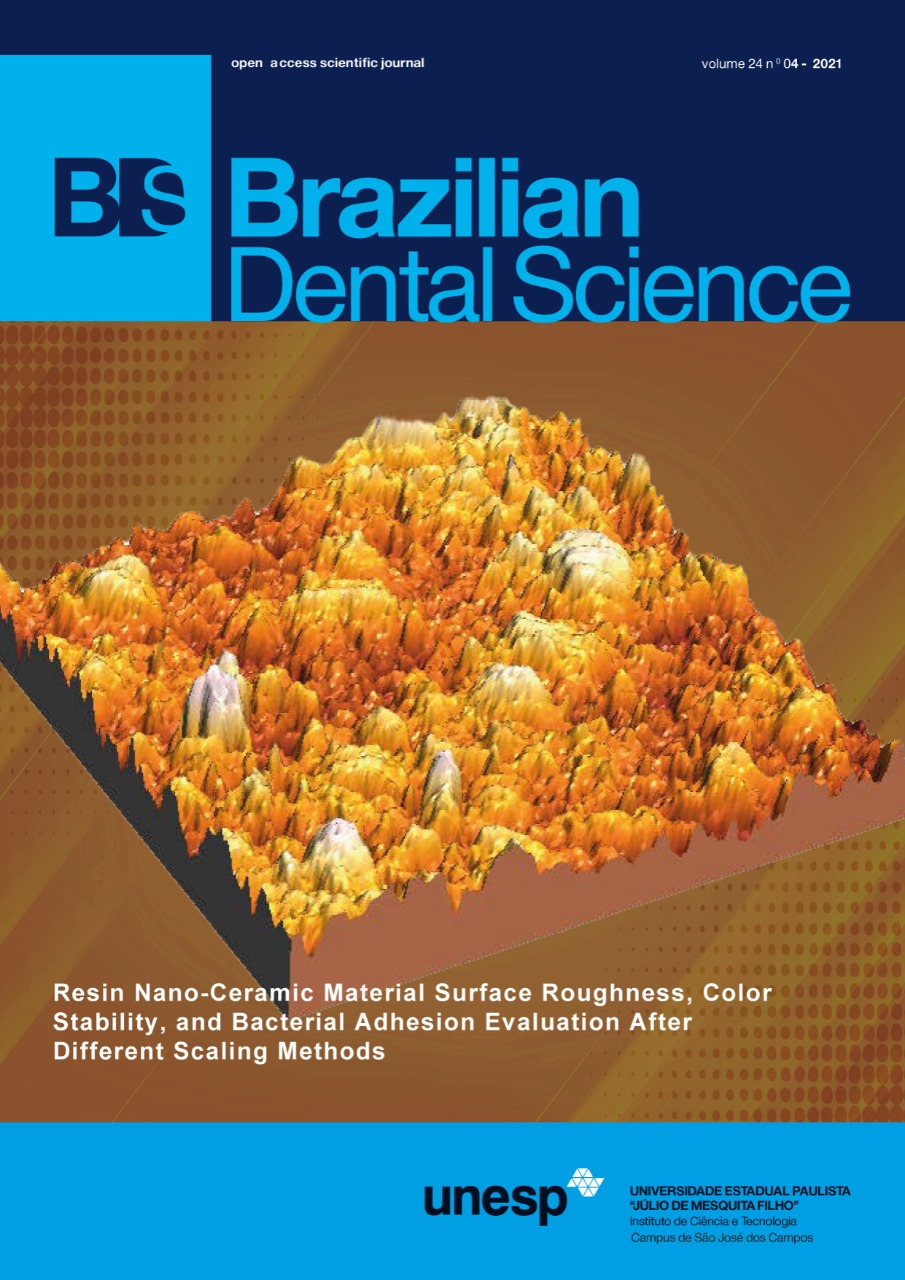Reconstruction of extensive sequel of frontal fracture: optimizing results
DOI:
https://doi.org/10.14295/bds.2021.v24i4.2587Abstract
Introduction: Fractures of the frontal bone correspond to 5 to 15% of all facial fractures. This type of fracture can lead to difficulties in restoring bone congruence and to postoperative secondary aesthetic problems. Objective: This paper aims to present a clinical case report of frontal bone fracture where a late reconstruction was performed using a titanium mesh with the aid of stereolithographic model prototyping. Case report: Female patient, 26 years old, with aesthetic sequelae in the upper third of the face after a motorcycle accident. The imaging exams showed a comminuted frontal bone fracture, as well as upper edge and right orbit ceiling involvement. The planning consisted of reconstruction of the affected area with the use of a titanium mesh pre-shaped in a stereolithographic model. The procedure was performed under general anesthesia and coronal access. After installation of the fixation material, pericranial flap rotation and suture of the surgical wound were performed. The patient progressed well, with considerable improvement in facial aesthetics. Conclusion: This paper reports the importance of good planning in cases of frontal bone fracture sequel, in which the use of model-shaped mesh in a stereolithographic model tends to optimize surgery, bringing aesthetic and psychosocial benefits.
Keywords
Frontal bone; Titanium; Craniocerebral trauma.
Downloads
Downloads
Published
How to Cite
Issue
Section
License
Brazilian Dental Science uses the Creative Commons (CC-BY 4.0) license, thus preserving the integrity of articles in an open access environment. The journal allows the author to retain publishing rights without restrictions.
=================




























